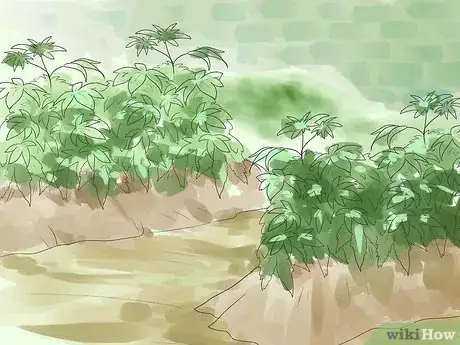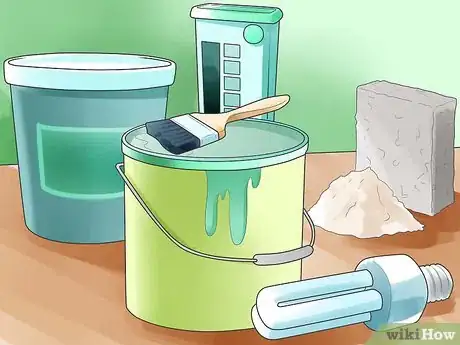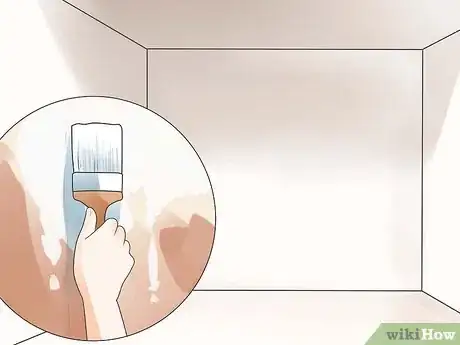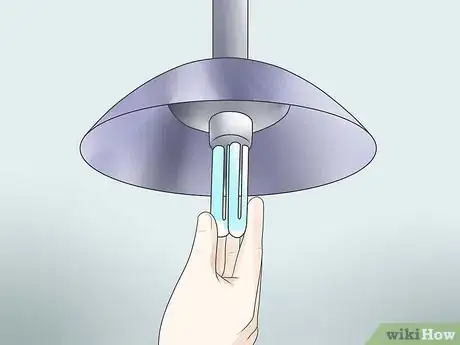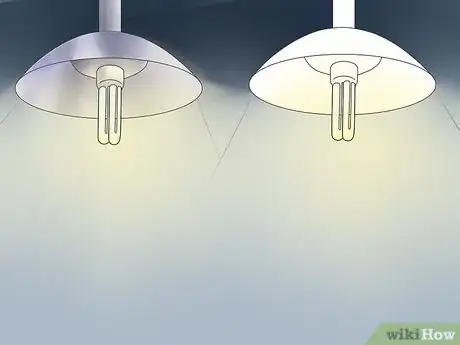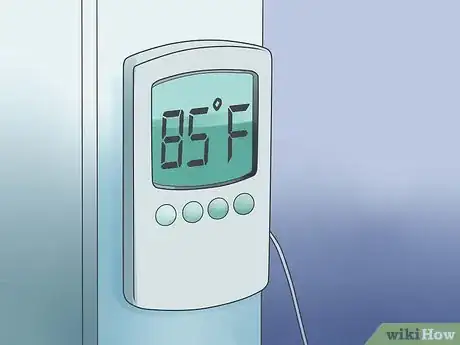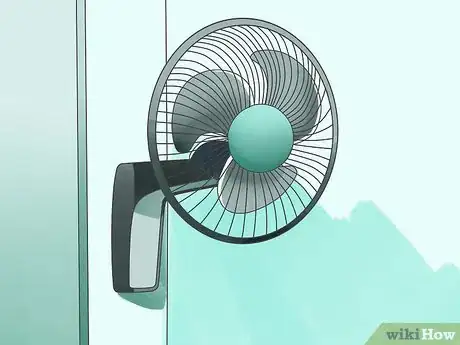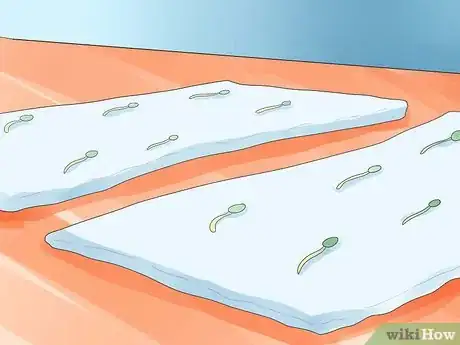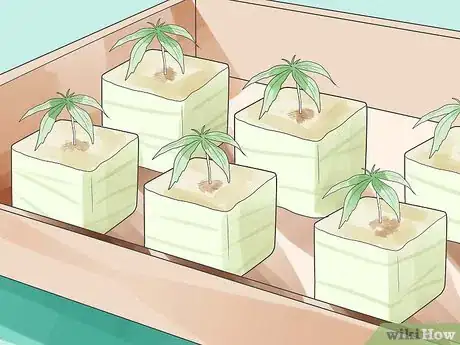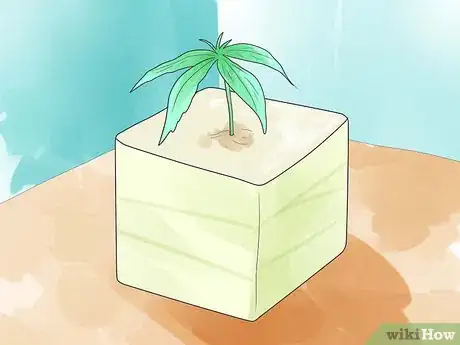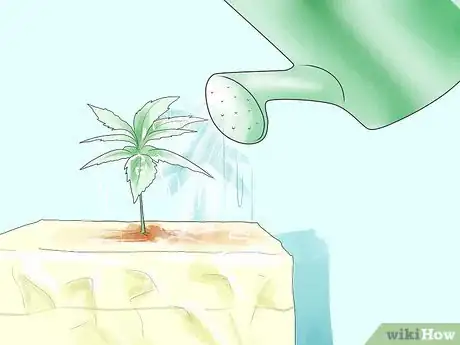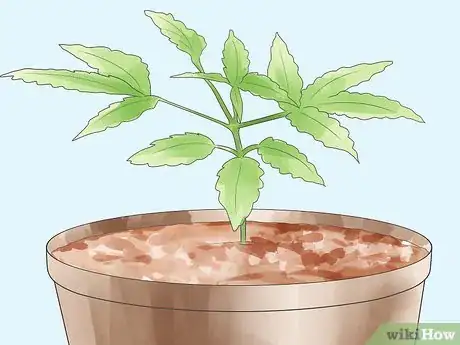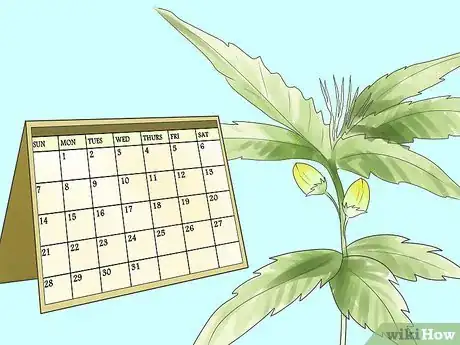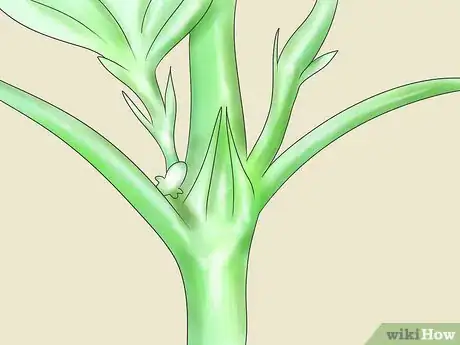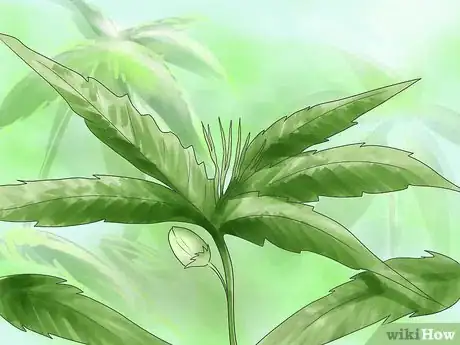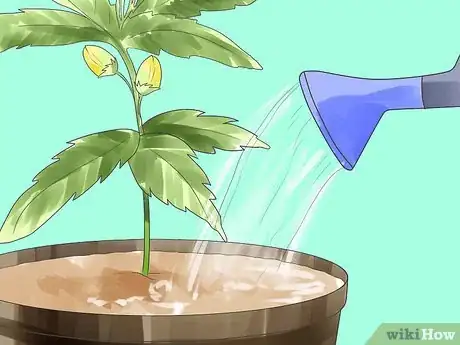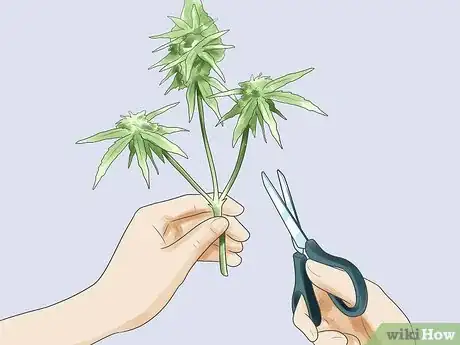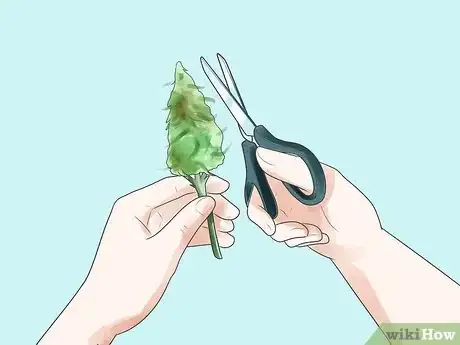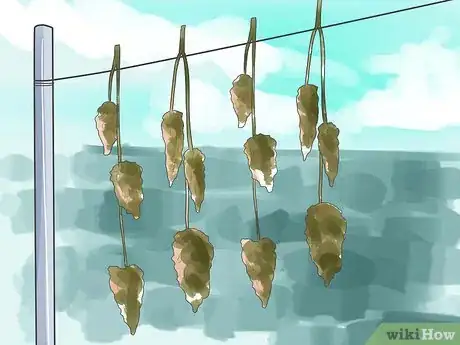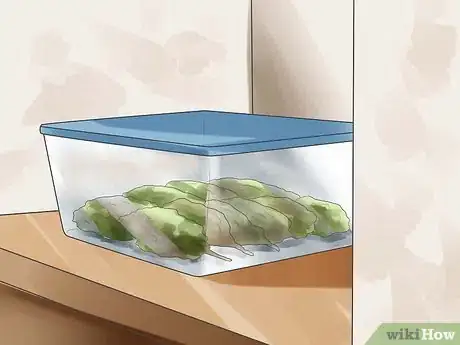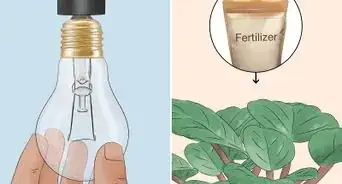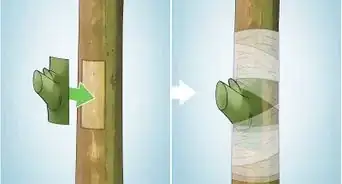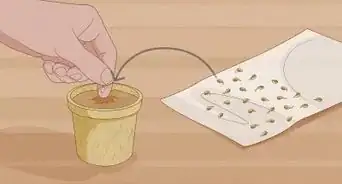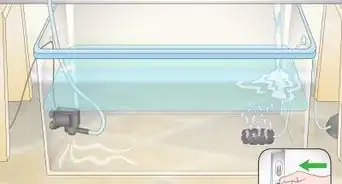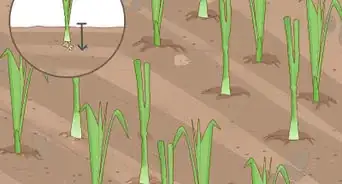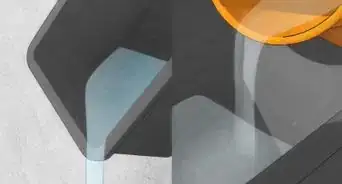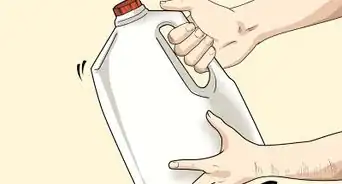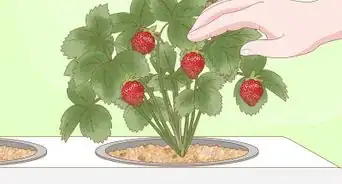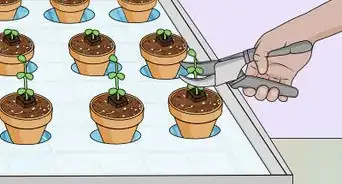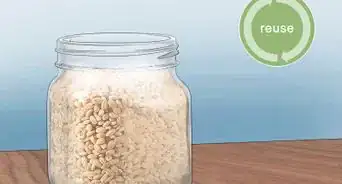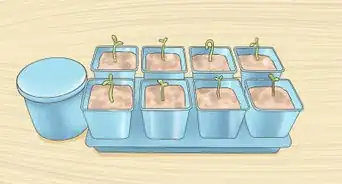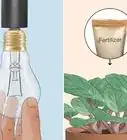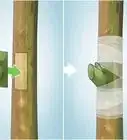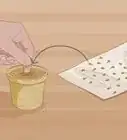This article was co-authored by Lauren Kurtz. Lauren Kurtz is a Naturalist and Horticultural Specialist. Lauren has worked for Aurora, Colorado managing the Water-Wise Garden at Aurora Municipal Center for the Water Conservation Department. She earned a BA in Environmental and Sustainability Studies from Western Michigan University in 2014.
There are 14 references cited in this article, which can be found at the bottom of the page.
wikiHow marks an article as reader-approved once it receives enough positive feedback. In this case, 96% of readers who voted found the article helpful, earning it our reader-approved status.
This article has been viewed 1,238,795 times.
Whether you call it weed, cannabis, pot, marijuana, or something else, the plant known as Cannabis sativa is actually easy to grow at home when you know what you need to do. Growing hydroponically will provide you with higher yields and a shorter grow time compared to growing in soil, but it can often be difficult for the beginning grower to get started with hydroponics. However, most people think of plants growing in water when they think "hydroponics" but actually your plants will get many of the benefits of hydroponics as long as they're getting their nutrients directly in their water supply. However because of superior air to water ratio in hydroponics, it remains the industry standard. This tutorial will show you step-by-step how to grow your marijuana in 3-4 months using the (arguably) easiest hydroponic method: hand-watering in a soil-less medium.
Steps
Setting Up the Basics
-
1If you haven't already yet, consider growing marijuana the traditional way before you grow hydro. Growing hydroponic marijuana is a bit more difficult than growing marijuana in soil: You're optimizing for nutrients, light, and ventilation, which can be hard if you've never grown marijuana before.[1] Don't necessarily expect to jump straight from 0 to 60 without a hitch. Although growing is easy if you have the right knowledge and information, it usually takes time to gather both of those things.
- On the other hand, other constraints may force your hand and compel you to start off growing hydro. If you're a first-time grower and want to try hydro, know that you can be successful. Do your research but avoid telling your friends or acquaintances. Nothing can get you shut down quicker than blabbering about your hydro unit.
- Consider growing other plants hydroponically in addition to marijuana. Growing hydro doesn't need to mean just growing weed. You can grow lettuce, tomatoes, or even mushrooms hydroponically. Experimenting with these crops first may teach you valuable lessons you can use when growing marijuana.
-
2Obtain all the necessary items. If you're careful to shop around, you should be able to get everything you need for five plants for $300-$500. You should expect to get 1-3 ounces off each plant at the end. You will need (see the Things You'll Need section below for further details):
- Marijuana seeds or clones
- White paint or mylar
- Hydroponic nutrients
- Pots
- Potting medium such as coco coir
- Compact fluorescent lights (CFLs)
- A timer
- pH soil test
Advertisement -
3Prep your walls. Plants grow with the aid of light. If you're growing indoors, this presents somewhat of a problem. Many grow rooms are housed in dark spaces where light is absorbed instead of reflected. To get the most bang for your buck — and to make the best possible weed — you'll want your walls to either be painted a glossy white or be covered with mylar.
- Painting your walls a semi-gloss or flat white is probably the simplest solution. The flatter the white, the better, as glossy white reflects roughly 55% of the light coming from your source. Titanium white might be your best bet if you do decide to paint.
- Mylar is highly reflective. It has a reflection rate of roughly 90%, making it a much more efficient coating material than something like aluminum foil. But because mylar reflects light and heat very efficiently, you'll need to be sure that you have proper ventilation in your grow room.
Lighting and Ventilation
-
1Set up your grow lights. They should start out a little higher than the height of your pots, and should have room to be raised to the final height of your plants. There are a million ways to set up or hang the lights and you will need to do what works for your grow area. The simplest method is to either hang them from the bar in your closet or you can also clamp the lights onto something nearby that is the right height.
- Clamp reflectors are great for using CFLs. The socket is already attached, no wiring or electrical work is really needed, and the housing helps to reflect as much light as possible.[2] Remember that any excess light that doesn't hit your plants is wasted light.
-
2Make sure your lights are producing at least the minimum, and preferably the ideal, amount of lumens per square foot. Lumens is a unit for the total amount of visible light emitted by a source. Therefore, it's helpful to talk about how many lumens a source emits, as well as how many lumens your growing operation needs. On an average day, the sun emits about 5,000 to 10,000 lumens per square foot.[3]
- The absolute minimum needed to grow average-sized plants is around 3,000 lumens per square foot. Note that the actual amount of lumens that reach the bottom of your plant will fluctuate depending on the distance of the light source and the reflectivity of the surroundings.
- The ideal amount for a standard grow operation is somewhere between 7,000 and 10,000 lumens per square foot.[4]
- To figure out how many lumens per square foot you're working with, simply divide the total lumens by the total square feet. Say you're working with two 300-watt CFLs — each with 40,000 lumens — in a 3' x 3' x 2' area. Your total lumens is 80,000 and your total footage is 18'. 80,000 ÷ 18 ≈ 4,400 lumens per square foot.
-
3Take care that you don't burn or overheat your plants with your light source. Having sufficient light will help your marijuana grow tall, healthy, and chronic. But what to do about overheating. The ideal temperature for your grow operation is somewhere between 80 °F (27 °C) and 85 °F (29 °C), with 90 °F (32 °C) being the max.[5] If your temperature is anywhere below this, consider adding a small heater to generate additional heat. If your temperature is anywhere above this, a fan and additional ventilation may need to be added to help provide the perfect growing conditions.
-
4Get your grow room ventilated. Proper ventilation is absolutely necessary for vibrant plants. If your grow room is in a closet, for example, there's not much more that you can do other than an oscillating fan. In a box, however, adding a duct system is efficient for many home growers.
- To make a duct system, a simple squirrel cage fan (it looks like a hamster wheel) attached to 6" ducts will help mitigate rising temperatures and pungent odors.
- As with any operation, including an additional oscillating fan will help strengthen the stalks of the marijuana plants as they grow.
Germinating and Planting
-
1Germinate your marijuana seed. To get your weed seed to sprout, simply wet a large paper towel and lightly wrap your seeds in between the paper towel. Place the paper towel and cover with another plate to make sure the paper towel doesn't dry out.[6] Alternately, place the damp paper towel in a sealable plastic bag and rest somewhere dark and warm for at least 24 hours.
-
2Once the seed has germinated, transfer to a rock wool block. Rock wool is a great medium to grow the early-stage marijuana plant in. Once the seedling has started sprouting a significant root system, you can transfer the plant into the coco coir.
-
3Start feeding your plants with water (filtered or tap) mixed with nutrients. Adjust the water to have a pH of 5.5 to 6.0 for best results.
- In the beginning, give your plants nutrients at quarter strength and work your way up to full strength nutrients over the course of a week or two. One of the biggest mistakes many new growers make is giving their plant too many nutrients which can hurt your plant. Most brands of nutrients will come with a hydroponic feeding schedule which can usually be followed exactly.
- You can get Fox Farms Hydroponic Nutrient Trio and follow their included instructions exactly if you're not sure what to get for nutrients. The Fox Farms Hydroponic Nutrient Trio works great for growing marijuana. After you have added your nutrients to your water, you'll want to adjust the pH of the solution to around 5.5-6.0 to ensure proper nutrient absorption.[7]
Caring For Your Plant
-
1Water your plants with pH'ed and nutrient-filled water whenever the top of the coco coir starts feeling dry. This will start out with you watering the plants every couple of days when they're small, and may end up with you watering them once a day towards the end of the plant's flowering cycle.
- Ensure that at least a little extra run-off water comes out the bottom of the container whenever you water your plants to ensure that unused nutrients don't build up in your medium. Coco coir and perlite are very forgiving if you accidentally over or under-water your plant, but make sure to adjust your watering schedule accordingly if you notice your plant's leaves are wilting or drooping.
-
2Keep your marijuana plants in the vegetative stage of growth until they are about half their final desired height. You can keep your marijuana plants in the vegetative stage by giving them 18-24 hours of light a day.
- Your marijuana has two major grow phases after it's a seedling, the vegetative and flowering stages. You will treat the plant differently depending on what stage it's in. During the vegetative stage, your marijuana plants are only worried about growing and getting big. In order to keep your plants in the vegetative stage, they will need to get at least 18 hours of light a day. This simulates "summer," when the days are long. You can give your plants as much as 24 hours of light per day during the vegetative stage, but you'll find success as long as you stay within that 18-24 hours or light per day range.
- The height of the plant is often the main factor when determining how long to keep your marijuana plants in the vegetative stage. Your plant can double its height in the flowering stage, so you will want to keep the plant in the vegetative stage until it's about half it's desired final height. If growing in a closet, it's a good idea to keep your plants in the vegetative stage until they're 6-18" tall.
-
3Start the flowering stage when your plants achieved the correct height. Tell your cannabis plants to begin the flowering stage by changing to a 12 hours of light/12 hours of darkness schedule so that they start producing buds. This simulates the beginning of fall and winter.
- In the flowering stage, your plants stop worrying about growing as much, and start putting their energy into growing flowers/buds. You will need to tell your plants when it's time to start flowering. In the wild, marijuana plants start flowering when the days start getting shorter because that's a sign that winter is coming. In order to simulate the same conditions, you will need to switch your light schedule so that your lights are on for 12 hours a day, and off for 12 hours a day.
-
4Sex your plants and get rid of any males. Determine the gender of your plants 1 to 2 weeks after first changing the lights for the flowering stage. Get rid of any males you happen to find in the bunch. Males will pollinate females, causing females to start diverting energy from THC production into seed growth.[8] Pollinated weed isn't unsmokable, but it's a lot less potent than unpollinated weed and picking out seeds can be a pain.
- After making the switch in light schedule, you will start noticing the first signs of your plant's gender about 1-2 weeks. Female plants will grow white hairs and males will start growing grape-like balls that eventually become pollen sacs. In order to maximize on the amount of bud you get, you will want to make sure you remove any male plants so they don't pollinate your females. If male and female plants stay together, than your females will end up making lots of seeds instead of buds. You also don't get any usable bud off of a male plant, only pollen. [9]
-
5Wait patiently while your plants mature in the flowering stage. This is often the toughest part for beginning growers. The Flowering Stage can last from 6 weeks to 12 weeks or longer depending on the marijuana strain that you're growing with. [10]
-
6Start feeding your marijuana plants just plain, pH'ed water 1-2 weeks before it's time to harvest. Otherwise, you may actually be able to taste the nutrients in your final buds (your marijuana could have a chemical after-taste). This process is typically known as a flush.
- Towards the end of your plant's flowering cycle, you may notice that some of the oldest leaves start turning yellow and falling off. This is totally normal and is a sign that your plant is taking nitrogen out of the leaves and putting them into the buds/flowers. This is a signal that it's getting close to harvest time, and you'll usually want to stop giving your plants nutrients with their water for the last 1-2 weeks to ensure the best possible taste of your final bud.
Harvesting and Curing
-
1Harvest your plants when they're ready by cutting down the whole plant or cutting off pieces of buds at a time.
- There are many methods to determine the right time to harvest your plant. Basically, you want to harvest when 50-75% of the white pistils/hairs have turned amber/brown.
- Another way to tell is when the trichomes (also known as crystals or resin glands) are either all white/milky or half white and half amber.
- Harvesting earlier will give a more thoughtful or in-your-head marijuana experience while harvesting later will give you a heavier or more relaxing marijuana experience. You will want to experiment to find what harvest time is the best for you.
-
2Trim your plant so that there aren't any leaves sticking out from the buds. Leaves will make your final smoke a lot more harsh and don't contain much THC, so you don't want them in your final product. You can still use them to make hash, butter, or Green Dragon.
-
3Hang your trimmed buds upside down in a cool, dark place and let them dry until the buds snap off cleanly (as opposed to just bending) when you put pressure on them.
-
4Place the buds in an air-tight container and leave them in a cool, dark place for 2 weeks to a month or more to "cure." Open the jar once a day to get some air ventilation and make sure you release any moisture. Moisture is your enemy when curing and will cause mold, so make sure your buds are properly dried before curing them.
Expert Q&A
Did you know you can get expert answers for this article?
Unlock expert answers by supporting wikiHow
-
QuestionWhere can I get the seeds?
 Lauren KurtzLauren Kurtz is a Naturalist and Horticultural Specialist. Lauren has worked for Aurora, Colorado managing the Water-Wise Garden at Aurora Municipal Center for the Water Conservation Department. She earned a BA in Environmental and Sustainability Studies from Western Michigan University in 2014.
Lauren KurtzLauren Kurtz is a Naturalist and Horticultural Specialist. Lauren has worked for Aurora, Colorado managing the Water-Wise Garden at Aurora Municipal Center for the Water Conservation Department. She earned a BA in Environmental and Sustainability Studies from Western Michigan University in 2014.
Professional Gardener
-
QuestionIn a 24 inch grow box, how tall should I start the blooming?
 Lauren KurtzLauren Kurtz is a Naturalist and Horticultural Specialist. Lauren has worked for Aurora, Colorado managing the Water-Wise Garden at Aurora Municipal Center for the Water Conservation Department. She earned a BA in Environmental and Sustainability Studies from Western Michigan University in 2014.
Lauren KurtzLauren Kurtz is a Naturalist and Horticultural Specialist. Lauren has worked for Aurora, Colorado managing the Water-Wise Garden at Aurora Municipal Center for the Water Conservation Department. She earned a BA in Environmental and Sustainability Studies from Western Michigan University in 2014.
Professional Gardener
-
QuestionIs weed illegal?
 Community AnswerIf non-medically used in certain states, yes. If you are over 21 in Colorado or Washington, you can recreationally use marijuana legally.
Community AnswerIf non-medically used in certain states, yes. If you are over 21 in Colorado or Washington, you can recreationally use marijuana legally.
Things You'll Need
- Marijuana Seeds or Clones.
- High-quality hydroponic nutrients.
- Pots to put your plants in. Try getting 1–5 gallon (3.8–18.9 L) pots depending on the the size of your grow area and how big you want your plants to grow. Remember that you will have to water plants more often if they're kept in a small pot, but larger pots will need more light.
- Coco coir (mixed half and half with perlite for the best results) which can both be purchased cheaply online or at a hydroponic garden store. Try usiny a coco coir hydroponic potting mix which is part of the Roots Organics line by Aurora. This potting mix already has perlite added to it and costs less than $25 for a big bag.
- CFLs (Compact Fluorescent Lights). You can find a 42 watt CFL bulb at your local hardware store for around $10, and to start, you should have at least two of the 42 watt bulbs per plant.
- Enough light sockets for all your light bulbs (they're less than $5 apiece at some hardware stores, usually they also come with some sort of clip you can use to clip your lights anywhere.
- A timer to make your lights go on and off when you want. You can get a cheap one for $5 or spend up to $30 getting a nice digital one You don't necessarily need one to start, but you will need to get a timer by the time you start flowering your plant (about a month in).
- A pH testing kit. You can find these in pet stores in the aquarium section, but it's a better idea to get one specifically for growing (still under $20) as it tests for pH in a more useful range for growing.
References
- ↑ http://www.weedfarmer.com/cannabis/hydroponics101_guide.php
- ↑ http://www.rollitup.org/indoor-growing/32335-constructing-100-cfl-grow.html
- ↑ https://hightimes.com/grow/cannabis-all-star-shares-latest-lighting-secrets/
- ↑ http://www.420magazine.com/forums/grow-lighting/111680-cfl-light-tutorial.html
- ↑ http://weedfarmer.com/growing_guide/temperature.php
- ↑ http://www.growweedeasy.com/how-to-germinate-marijuana-seeds
- ↑ http://growweedeasy.com/how-do-i-check-the-pH-of-my-water
- ↑ http://howtogrowmarijuana.com/marijuana-sexing
- ↑ http://growweedeasy.com/why-do-i-not-want-male-marijuana-plants
- ↑ http://growweedeasy.com/the-basics-of-growing-marijuana#harvest This page has more information about when to harvest the plants if you're feeling unsure
- ↑ http://growweedeasy.com/where-can-i-safely-buy-marijuana-seeds-online
- ↑ http://growweedeasy.com/the-basics-of-growing-marijuana#harvest
- Simple and Easy Hand-Watered Hydroponic Marijuana Grow Tutorial for Beginners - Basis for this wikihow article. All information is shared with permission from the creator of GrowWeedEasy.com.
- The Basics of Growing Marijuana
About This Article
To grow marijuana hydroponically, start by hanging up grow lights that are at least 3,000 lumens per square foot in a well-ventilated space that has white or reflective walls. Then, germinate some marijuana seeds and transfer the seedlings to rock wool blocks once they sprout. Whenever the tops of the blocks feel dry, water your plants with nutrient-filled water. Keep your plants in the vegetative stage until they're about half their desired height, then limit them to 12 hours of light per day so they start to flower. To learn how to harvest and cure your marijuana, scroll down!
